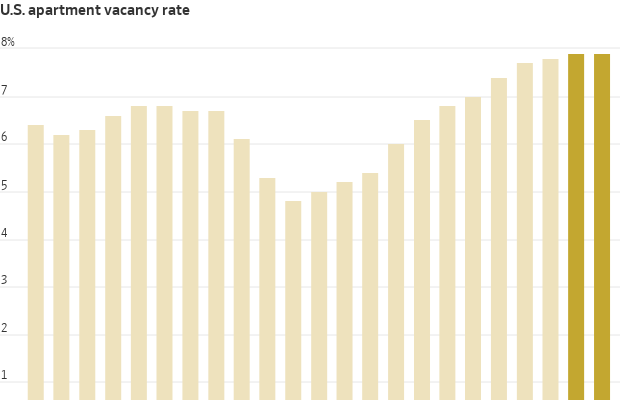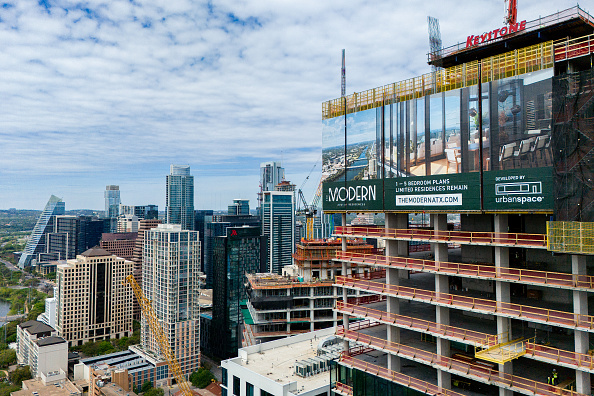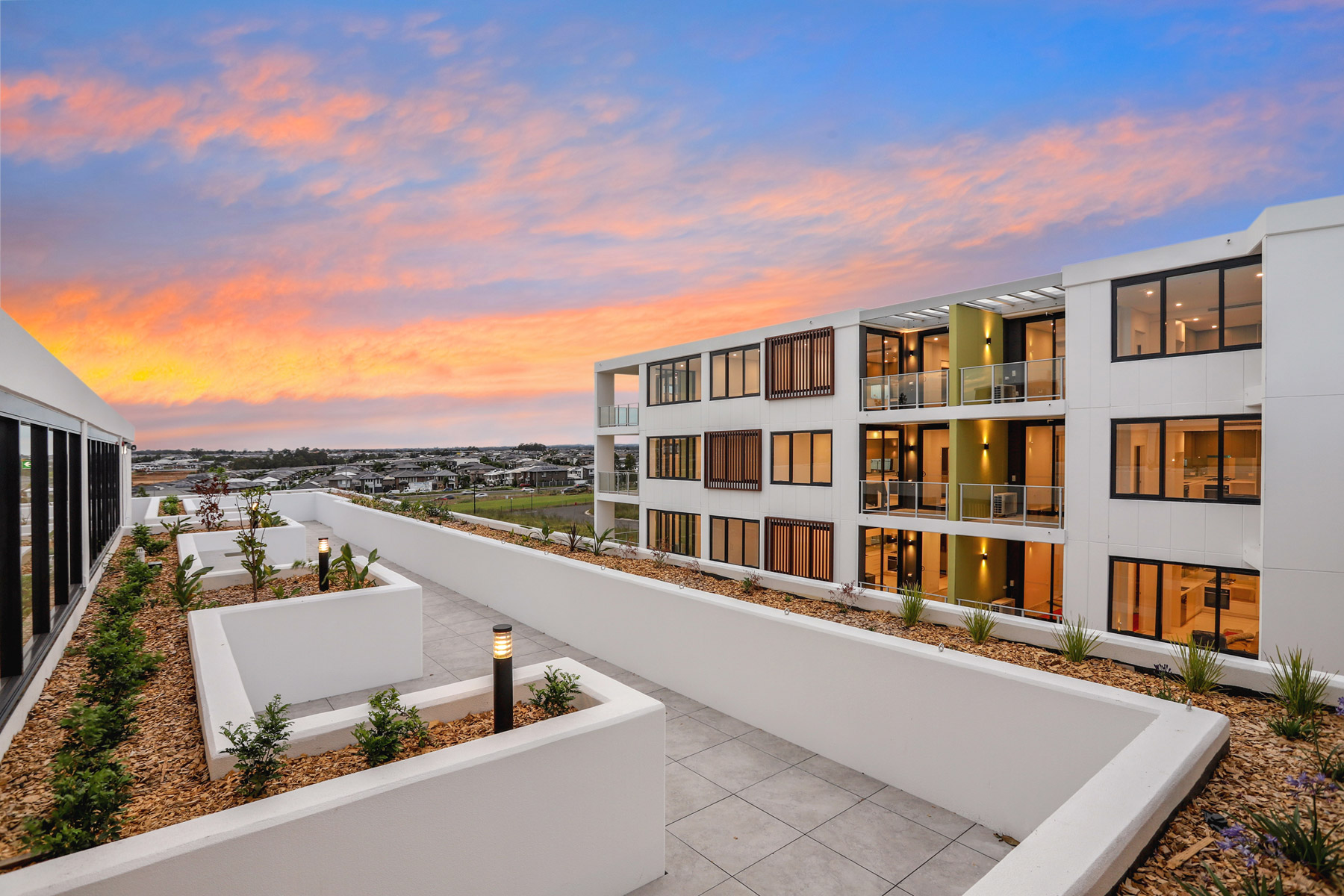America’s Empty Apartments Are Finally Starting to Fill Up
If that demand is sustained, landlords likely will have more pricing power starting sometime next year
The biggest apartment construction boom in four decades flooded the market with new supply over the past two years. Apartment owners had to contend with a surge in empty units.
That is starting to change.
The vacancy rate, or the share of apartment units that are empty, stopped rising for the first time in three years last quarter, as demand for apartments rose to its highest levels since 2021, according to CoStar .
The more than 1.2 million new apartment units that were built during the past two years are filling up. If that demand is sustained, if the economy remains strong and if housing prices remain near record highs, landlords likely will have more pricing power starting sometime next year. That could allow building owners to raise rents more than they have recently.
Some 672,000 new apartment units will have been completed by the end of this year, but only about half that number is expected in 2025, and even fewer in 2026, CoStar said.
“The worst of the pressures on pricing from new supply are likely behind us,” said Eric Bolton , chief executive of publicly traded landlord Mid-America Apartment Communities , on an October earnings call.
Housing affordability has become a hot-button election issue at the federal and local levels. Any sign that rents are poised to rise in 2025 could intensify pressure on the new administration to address housing costs. President Biden announced a plan over the summer to cap rent increases, though it would need to pass Congress.
Nationally, sales of apartment buildings have also started to pick up again, as investors become more confident that the market is bottoming and sellers are more willing to acquiesce on price.
Renters were hit hard by the historically high rent increases during the pandemic years, especially in Sunbelt cities, such as Phoenix and Tampa, Fla., where rents rose 20% or more during 12-month periods.
Rents for new leases nationwide have held close to flat for more than a year. That is due in part to a big split between supply-heavy Sunbelt cities, some of which have seen rent cuts, and the rest of the country, which hasn’t.
Renters who choose to renew their leases were still paying a 3.5% rent increase on average as of this past August, the most recent month data was available from Yardi Matrix.
Throughout this year, the places with the highest renewal rent growth have been on the coasts and in the Midwest. New York City, Los Angeles, Indianapolis and Columbus, Ohio, saw renewal rent increases of 5% or more in July, according to Yardi.
Increased return to office orders in major employment hubs may also start translating into even more urban rental demand soon, especially in coastal cities.
In Seattle, Equity Residential said in an October earnings call that it is seeing a pickup in leasing from Amazon employees, who are locking in apartments ahead of a five-day office attendance policy, scheduled to begin in January.

On the flip side is Austin, Texas, which has experienced a building boom after companies such as Tesla and Oracle moved offices there. Austin’s vacancy rate, if new buildings are included, is the highest in the country at over 15%, according to CoStar.
Rent growth for new leases in the Texas capital ranks last among major metros during the past year. Landlords of new luxury buildings are still offering big concessions, such as months of free rent, to fill up units. undefined undefined “Basically, the worst apartment market in the country right now is Austin,” said Matt Rosenthal , managing partner of multifamily investor Eastham Capital.
On an annual basis, apartment building sales have grown for two consecutive quarters, according to MSCI Real Assets. Places seeing some of the biggest increases in sales include Denver, San Francisco and the Washington, D.C. suburbs.
Apartment companies also continue to feel tailwinds from renters locked out of homeownership. Major owners have remarked on how few of their renters move out to purchase homes now, amid some of the worst conditions for home-purchase affordability in four decades. That is unlikely to change much in 2025.
“Probably the biggest story this year that we’ve seen [is] from people coming in the front door and then not leaving [out] the back door,” said Joe Fisher , president of publicly traded apartment owner UDR .
 Copyright 2020, Dow Jones & Company, Inc. All Rights Reserved Worldwide. LEARN MORE
Copyright 2020, Dow Jones & Company, Inc. All Rights Reserved Worldwide. LEARN MORE
Records keep falling in 2025 as harbourfront, beachfront and blue-chip estates crowd the top of the market.
A divide has opened in the tech job market between those with artificial-intelligence skills and everyone else.
The 2026 McGrath Report warns that without urgent reforms to planning, infrastructure and construction, housing affordability will continue to slip beyond reach for most Australians.
Australia’s housing market has reached a critical juncture, with home ownership and rental affordability deteriorating to their worst levels in decades, according to the McGrath Report 2026.
The annual analysis from real estate entrepreneur John McGrath paints a sobering picture of a nation where even the “lucky country” has run out of luck — or at least, out of homes.
New borrowers are now spending half their household income servicing loans, while renters are devoting one-third of their earnings to rent.
The time needed to save a 20 per cent deposit has stretched beyond ten years, and the home price-to-income ratio has climbed to eight times. “These aren’t just statistics,” McGrath writes. “They represent real people and real pain.”
McGrath argues that the root cause of Australia’s housing crisis is not a shortage of land, but a shortage of accessibility and deliverable stock.
“Over half our population has squeezed into just three cities, creating price pressure and rising density in Sydney, Melbourne and Brisbane while vast developable land sits disconnected from essential infrastructure,” he says.
The report identifies three faltering pillars — supply, affordability and construction viability — as the drivers of instability in the current market.
Developers across the country, McGrath notes, are “unable to make the numbers work” due to labour shortages and soaring construction costs.
In many trades, shortages have doubled or tripled, and build costs have surged by more than 30 per cent, stalling thousands of projects.
Need for systemic reform
McGrath’s prescription is clear: the only real solution lies in increasing supply through systemic reform. “We need to streamline development processes, reduce approval timeframes and provide better infrastructure to free up the options and provide more choice for everyone on where they live,” he says.
The 2026 edition of the report also points to promising trends in policy and innovation. Across several states, governments are prioritising higher-density development near transport hubs and repurposing government-owned land with existing infrastructure.
Build-to-rent models are expanding, and planning reforms are gaining traction. McGrath notes that while these steps are encouraging, they must be accelerated and supported by new construction methods if Australia is to meet demand.
One of the report’s key opportunities lies in prefabrication and modular design. “Prefabricated homes can be completed in 10–12 weeks compared to 18 months for a traditional house, saving time and money for everyone involved,” McGrath says.
The report suggests that modular and 3D-printed housing could play a significant role in addressing shortages while setting a new global benchmark for speed, cost and quality in residential construction.
Intelligent homes
In a section titled Weathering the Future: The Power of Smart Design, the report emphasises that sustainable and intelligent home design is no longer aspirational but essential.
It highlights new technologies that reduce energy use, improve thermal efficiency, and make homes more resilient to climate risks.
“There’s no reason why Australia shouldn’t be a world leader in innovative design and construction — and many reasons why we should be,” McGrath writes.
Despite the challenges, the tone of the 2026 McGrath Report is one of cautious optimism. Demand is expected to stabilise at around 175,000 households per year from 2026, and construction cost growth is finally slowing. Governments are also showing a greater willingness to reform outdated planning frameworks.
McGrath concludes that the path forward requires bold decisions and collaboration between all levels of government and industry.
“Australia has the land, demand and capability,” he says. “What we need now is the will to implement supply-focused solutions that address root causes rather than symptoms.”
“Only then,” he adds, “can we turn the dream of home ownership back into something more than a dream.”
A bold new era for Australian luxury: MAISON de SABRÉ launches The Palais, a flagship handbag eight years in the making.
Ophora Tallawong has launched its final release of quality apartments priced under $700,000.
























